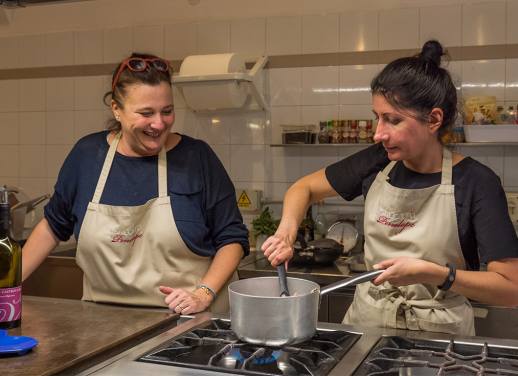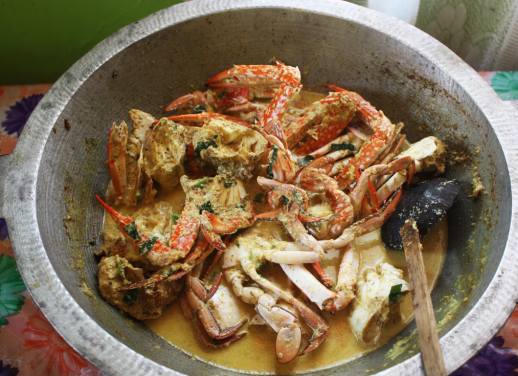One of the biggest surprises travellers get when visiting Russia these days is the variety of proper, good food. Gone are the days of sushi and stodge.
‘Thanks’ to the economic sanctions and renewed patriotic moods, high calibre chefs are rediscovering indigenous Slavic dishes and swearing by local products; marbled beef from Bryansk, Russian mozzarella, world-class Crimean wine… Many ingredients and techniques – like wild mushrooms, fresh water fish, tomplenie baking in traditional ovens – are difficult to export, so experiencing them in situ is the only way.
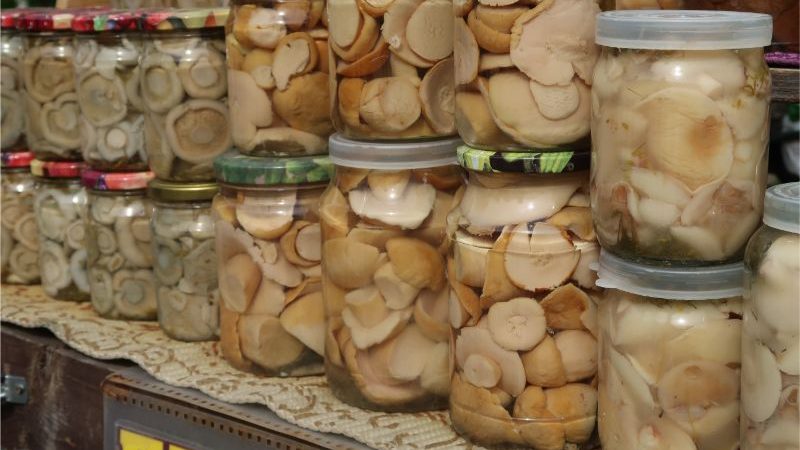
Jars of pickled mushrooms.
New places to eat are springing up like mushrooms, offering a warm service (yes!) and ‘democratic’ prices, but a lot of great food is still to be found on food markets and in people’s houses. Experience them all, we say, like Russians; don’t do half measures!
Here’s what you can expect to eat – and where – on a 10-day Real Food Adventure around Russia.
Saint Petersburg
Be it the ‘Cultural capital of Russia’ or ‘Northern Venice’, St Petersburg never fails to charm with its wide boulevards, white nights in summer – and Pitertsys’ (those living in SP) love of a good meal. Kuznetsky market, with the splendour of its neo-classical covered hall, is a great place to begin your foodie journey.
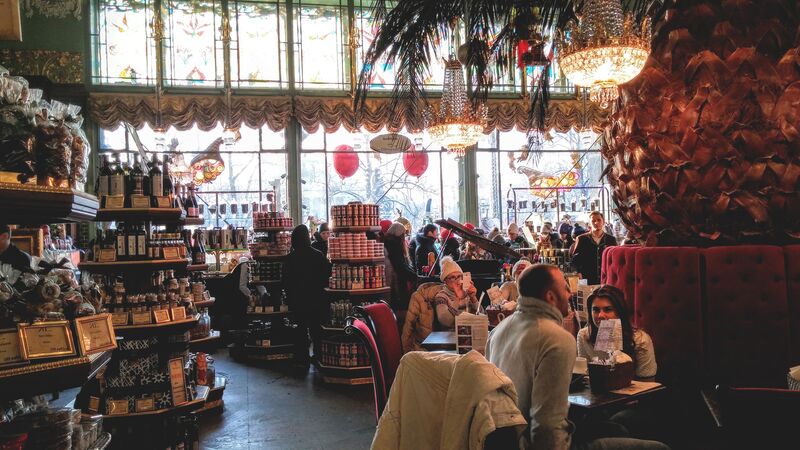
The perfect spot to pick up a sweet treat.
Once inside, spend time just enjoying the aromas – parsley, dill, spices, pickles – the sounds of the Slavic banter, and a sight of monolith, tiled stalls, many gracing the old-fashioned scales. The market is considered a little more upscale than others for a good reason: most produce is from farms (rather than wholesalers) and samples are aplenty. Raw honey, huge vats of tvorog cow’s curd cheese, theatrically displayed vegetables from across Russia, tubs of different caviars and pickles (lightly pickled malosolnye gherkins are a must).
EXPLORE OUR FULL RANGE OF ADVENTURES IN RUSSIA HERE
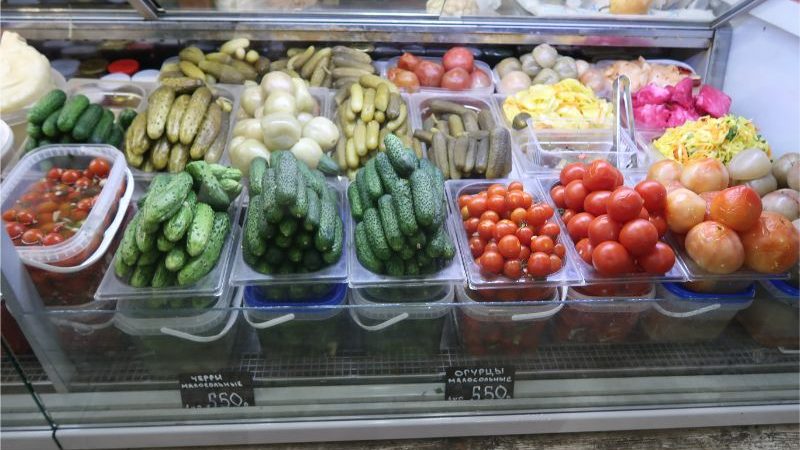
ALL the pickles (and a few tomatoes, for good measure).
Outside by the entrance is the (unlicensed) world of babushkas, old ladies selling produce from own allotments. The market is also your chance to pick up snacks for the train journey ahead. Eating and socialising on Russian trains is a ritual, so stock up on cold meats, cheese, bread and sweets to enjoy on board over a glass of black tea (with sugar and lemon, never milk!), served by a provodnitsa guard in special metal holders.
If you’re lucky to be invited to have a dinner in someone’s house, you’re in for a treat. Come prepared with a little gift, like chocolates or flowers, and be ready to take off your shoes. Inside you’ll probably be welcomed by a table already laden with food.
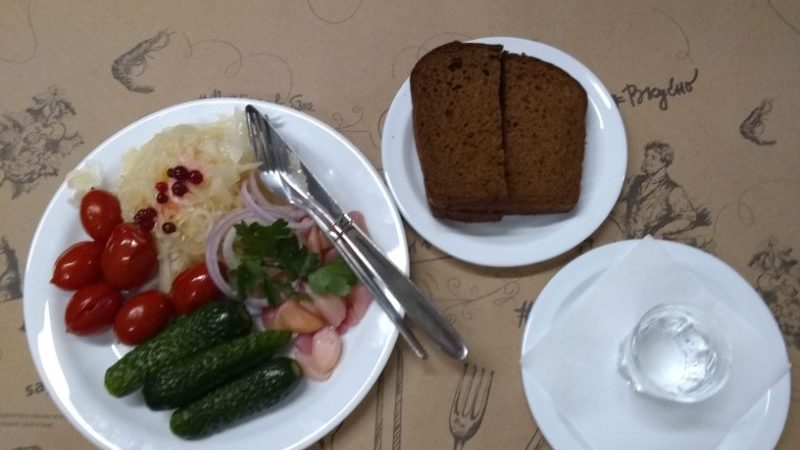
Aaaaaand a few more pickles.
Zakuski are appetisers of pickles, salami, bread and salads (the ‘Russian’ potato salad is actually called Olivier here), smoked or dried fish. To be followed by the ‘hot’ course such as golubtsy or ‘little doves’, slowly cooked cabbage leaves stuffed with meat and rice, slathered with a tomato sauce. You’ll most certainly be offered vodka (always from a freezer) and non-alcoholic drinks like kvass (a ginger-beer-like fermented rye drink) or berry compote.
LOVE TO EAT? CHECK OUT OUR FULL RANGE OF REAL FOOD ADVENTURES NOW
Suzdal
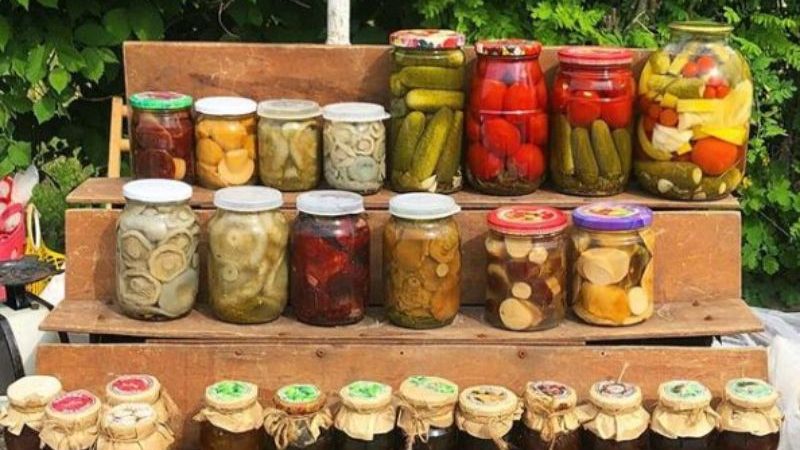
A roadside stall – featuring pickles.
Travelling to Vladimir and Suzdal on the so-called Golden Ring will give you the first glimpse into the more rural way of Russian life, where the revival of artisanal traditions is taken seriously. Bucolic Suzdal, peppered with bulbous churches and one-story wooden houses, was one of the first towns in Russia in the early 2000s to develop an intelligent food tourism programme.
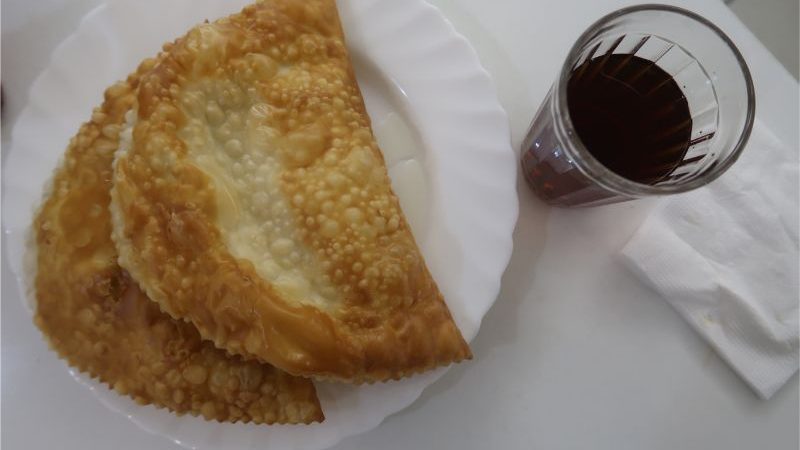
A little nalivka with your pastry (no pickles).
Until the 1917 revolution this region was famous for its cherry orchards, so now again you can taste the locally made nalivka, a cherry liquor once called the ‘Russian champagne’. Mead, this ancient Russian honey drink, and its little-known sibling stalennyj mead – slow-fermented with berries – have become firmly associated with Suzdal (try some of the best in Ulej restaurant). Browse the lavki shops, selling clay and porcelain kitchen wares with Suzdal motifs, and in the evening learn how to make borsch, the quintessential Russian (but some would say, Ukrainian) beetroot soup, whose complex, sweet and sour flavours are the cornerstones of the Slavic food cultures.
RELATED: WHAT TO EXPECT ON A REAL FOOD ADVENTURE AROUND RUSSIA
Kazan
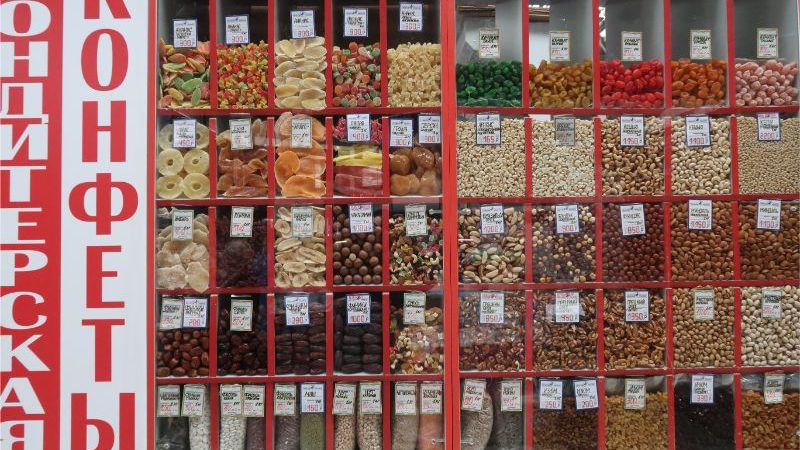
Nuts. Lots and lots of nuts.
After a couple of days in Russian idyll, take another train to Kazan, the capital of the semi-autonomous republic of Tatarstan, some 700 kilometres east from Moscow. This is where you’ll start to appreciate how Russia straddles both Europe and Asia.
The city, with its World Heritage Kremlin, has been branded as the ‘third capital of Russia’. The population of the region is majority Muslim Tatar, who are famed for their baked goods, and have a distinctive culture and food traditions. Gorge yourself on the iconic chebureks (deep-fried flat breads with lamb), peremyach pies (triangular-shaped, and filled with chopped meat and onion) and olesh pies (normally eaten in stages, finished with the dough dipped in meat bouillon). If all goes to plan, in the evening you will learn how to make lagman, an aromatic soup/stew with home-made noodles and lamb that most Tatar families have their take on.
As Kazan was on a major trade route from China to Russia for centuries, locals take tea drinking seriously – and rarely ‘naked’ (unaccompanied by something sweet): go for talkysh kaleve, cones made from threads of honey and sugar, powdered with a mixture of melted butter and flour.
RELATED: SHOULD YOU TRAVEL SOLELY BASED ON FOOD EXPERIENCES?
Moscow
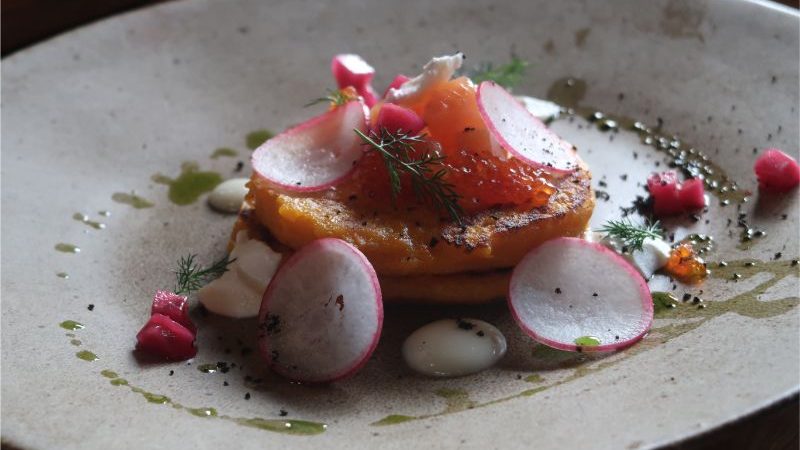
Pickled radish and caviar.
Moscow is a fittingly grand finale to this gastronomic tour, where you’ll experience how Russians take global food trends and do them bigger, bolder, and arguably, better. Take a food mall, then it’ll be the largest in Europe – check out the newly opened Depot in the old tram factory, with over a hundred independent, hand-picked street vendors with food from around the world (Georgian khachapuri, gooey cheese pies, and rolls with Kamchatka crab from the Far East of Russia are so worth the hunt). If it’s a bakery, then all its bread is made with flour from their own mills and all-natural leavens, like Professor Puf, a small chain of bakeries reviving ancient Russian bread varieties and making new (rye croissants, anyone?). If it’s an exploration of old food traditions, then let’s build the original Slavic pech oven – all 10 (or thereabouts) tonnes of it – and put it on the 85th floor of a skyscraper, like Russki restaurant, which offers old peasant dishes in the finest of settings.
RELATED: EVERYTHING YOU NEED TO KNOW ABOUT A NIGHT (OR TWO) ON AN OVERNIGHT TRAIN
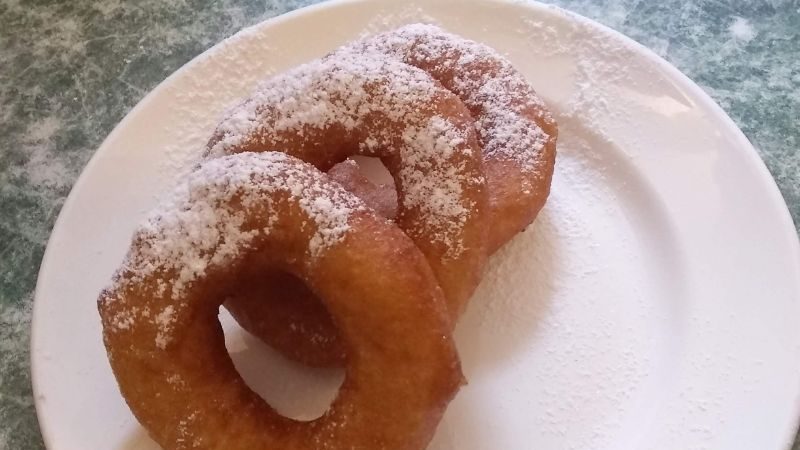
Sweet Russian donuts – and not a pickle in sight.
But you can also have your last meal by opting for a dish that most Russian households would have in their fridges (or freezers!). Humble pelmeni are Russian dumplings with ancestry in China; thin dough with juicy meat or fish inside. Lightly boiled and served with butter and/or sour cream (or go really Russian and dunk them into vinegar), they are beloved by just about everyone. Head to Varim Lepim, a small chain that does some of the tastiest – and with the wittiest names, like ‘Uncle from Kamchatka’ with king crab, ‘A mad couple’ with venison and boar, or ‘The Caucasian prisoner’ with stretchy Georgian Suluguni cheese.
Hungry? Find out more about our 10-day Real Food Adventure around Russia here.


